Google Chrome will now mark non-HTTPS sites as ‘not secure’
In July, Google will change how your website is shown on Chrome if you don’t have an SSL certificate installed.
Google have announced that to coincide with the release of Chrome 68, they will now mark all non-HTTPS site as not secure. The image below shows how this change will appear to users:
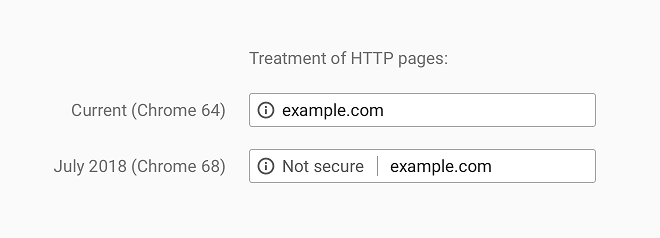 This may impact how trustworthy your site appears to users, which in turn could affect bounce rates, conversion rates and sales. Building trust is a vital component for a successful website. Chrome is the most popular browser, with over 44% market share, so if you don’t have an SSL installed on your site, it could appear as not secure for a large number of visitors.
This may impact how trustworthy your site appears to users, which in turn could affect bounce rates, conversion rates and sales. Building trust is a vital component for a successful website. Chrome is the most popular browser, with over 44% market share, so if you don’t have an SSL installed on your site, it could appear as not secure for a large number of visitors.
Most sites are now seeing the benefits of HTTPS – with Google reporting that 81 of the top 100 sites on the web use HTTPS by default
If your site doesn’t have an SSL installed, don’t panic, eSterling can help!
Contact us now for more information on how we can make sure your site secure and provide you with an SSL certificate.
Have you thought of obtaining the new .UK domain name?
You may have heard recently about the launch of the new UK DOMAIN SUFFIX .uk from the UK Domain Registrar NOMINET.
You may feel you wish to secure it for your company to match your current domain name(s)?
If you did, it would ensure that no other company could try to seek advantage of your company’s internet credibility, by replicating a website on your domain name(s). We feel that all of our clients would benefit from securing them.
We are currently offering a special concessionary rate and this domain name can then be directed to your main website.
For more information, please contact Wave White, our Customer Relationship Manager on 0121 7668087 or alternatively email wave.white@esterling.co.uk
Shh, don’t mention Christmas!
As ludicrous as it sounds, there are only 106 days left until Christmas and whilst the sane amongst us are still hanging desperately onto barbeque season and flip flops, the retailers amongst us know that now is the time to get ready for the festive season. The mince pies are in the supermarkets, the incidence of toy adverts on the television is steadily increasing and consumers, whether they know it or not, are being subtly herded towards the bright lights and ringing tills of Christmas shopping.
Now is the time to make sure your website is ready for the approaching season of madness, take stock, decide on any strategies or special offers and make sure your web development company has details of any changes you want to make sooner rather than later. Christmas 2013 is going to be tough for retailers but with a slight upward trend in the amount of consumer spending, for the well-prepared things are looking up. So, what to do to get your website ready?
1. Freshen up.
Have a good check through your content. It is always a good idea to change or add to your website, keeping your content fresh not only gives you Google points, but it keeps your customers interested too. If your site has a featured products section, start adding in your best-sellers or any new ranges. Make sure any photography is professional and shows off your products to their best advantage.
2. Special Offers.
Consider running some seasonal offers. Online purchasers love little extras like free delivery and that can make the difference between them choosing your site and someone else’s for their gifts. Most modern ecommerce systems will allow you to display linked products (customers who bought this also bought that). Alternatively a good old-fashioned BOGOF always goes down a treat.
3. Keep things simple.
Making your website hassle-free is one major way of improving your customer commitment. Look at how smoothly your search function works, and how easy it is for customers to checkout. Keep things simple and give good customer service and people will come back.
4. Don’t go mad on the tinsel.
Although you want to get ready for the festive market, don’t over-do the Christmas vibe. Gradually introduce changes to the site to get ready for the bells and whistles of December, but don’t go for it too early.
If you need to discuss any promotional changes to your website, or would like further information on website design, get in touch with eSterling today. We offer full design and development services to ensure your website is at the heart of your business.
Google’s Smartphone SERPs – Ranking On The Move

Anyone who pays any attention whatsoever to the world of web design will by now be very familiar with mobile sites and the concept of responsive design (and if you aren’t, you can read more here).
Well, now there’s another reason to perfect your mobile presence – Google have now decided to take the smartphone-friendliness of a website into consideration when determining where a site ranks in its SERPS – meaning if your site can’t strut it’s stuff on the small screen, you could be losing even more traffic than before.
Google have announced in a recent blog post that they are planning to roll out algorithm updates that will penalise websites that are incorrectly configured for mobile browsing.
Here are a few of the most common errors made in mobile sites, and our advice for avoiding them:
Correct Your Redirect
A common strategy for providing a mobile site alongside your desktop website is to use different URLs to serve different pages. This tactic can work very well, as it allows you to lay out the content on your pages in a different format that is better suited for smaller screens and touch-based interaction. However, these redirects must be handled correctly in order to provide a consistent experience for the user with minimal frustration.
A mistake that often crops up with this sort of configuration is directing smartphone users to a set page (most often the home page), no matter which desktop page they are trying to access – requiring extra work from the user in order to navigate back to the page they originally attempted to visit in the first place! Naturally, this can be a source of annoyance for the user, and can result in them leaving your site in search of something less tedious to find their way around.
The solution for this issue is simple – make sure each page redirects to its own respective mobile-friendly page. If the content is not available in mobile form, then directing the user to the home page or other related page is preferable to serving a 404 page – but still not really ideal.
Video Woes
The difficulty that mobile platforms have with video content is well documented, and a topic for lengthy discussion in its own right. However, if you’re serving unplayable video content to your mobile users, pretty soon you can expect to see a drop in your search rankings.
The solution for this problem is (perhaps unsurprisingly) to avoid Flash content on mobile sites in general, as it is unsupported in iOS and Android version 4.1 and higher. To include video content, it is possible to use the new HTML5 markup <video> tag, which should work without a hitch on all mobile platforms.
App-Unhappy
If you also provide a mobile app, it would seem only logical to promote this app to users browsing on a mobile device – and this can seem like a perfectly user-friendly move too, as your app may provide a better interface for your users to interact with similar content. However, advertising your app through interstitials or other methods which disrupt the conventional user experience of your site will soon start to have a negative impact on your site’s rankings, as well as annoying your users.
This doesn’t mean that you can’t try to entice mobile users with your shiny new app – as long as it is done tastefully. Google recommends using a “simple banner” displayed inline, alongside the rest of your website’s content. This can mean either a standard HTML image banner or utilising the support offered by the device’s native browser and operating system – for example Smart App Banners for Safari on iOS6.
More Speed, Less Haste
On top of these new rules concerning content, Google’s head of search spam Matt Cutts has alluded to a site speed penalty for mobile sites, similar to the penalty imposed on slow loading desktop sites. Whilst not much information has been disclosed at the minute, it’s fairly safe to assume that as mobile users are often connected to the internet via low-speed cellular connections, the load time that must be achieved will probably be significantly faster than in the desktop speed test.
As is usually the case with Google’s algorithm updates, these new guidelines will help to make the web a better place – both for webmasters and users themselves. Here at eSterling, we welcome them with open arms, and look forward to the mobile web becoming more user-centric and streamlined.
If you’d like to read more on the issues which may cause your mobile site to lose rankings, Google has helpfully compiled a list of common mistakes in smartphone sites to help you out.
As always, if there’s anything in this post which you wish to discuss or would like some more information on, please leave us a message in the comments or email us here.
I/O, I/O, It’s Off To Work We Go… Google’s I/O Conference 2013

Google’s annual developer conference, I/O (that’s geek-speak for Input/Output, to all you non-techies) went ahead last week. Whilst we weren’t able to fly the team out to San Francisco and we’ve been hard at work preparing for the upcoming Penguin 2.0 update, we have been keeping a keen eye on what went on at the event. Over the weekend we finally got time to sit down and watch the keynote from the event in it’s entirety ( all 3 hours, 51 minutes and 25 seconds of it!) so here’s our run down of the new tech that the Big G has unleashed…
Google Play Music goes Streaming

In what looks like an attempt to go head-to-head with services like Spotify, Pandora and Grooveshark, Google Play Music will now offer unlimited streaming music for a monthly subscription fee of $9.99. Dubbed “Google Music All Access”, the new service will offer radio-style streams and smart playlists, but whether this is enough to compete with the existing options in this field remains to be seen.
Maps Updated
One of the most useful Google services, Google Maps has been given a massive update, including a serious design refinement. The new Maps isn’t just a pretty face though – sporting tighter integration with Google’s social services, more emphasis one Street View and 3D, and the ability for users to submit Android “Photo Spheres” enabling people to actually look around the interior of businesses and public places, this is one of the most significant announcements at this year’s I/O. For those planning on going a bit further afield for their next holiday, Google Maps now includes the astounding ability to explore outer space! Don’t throw out your old A-Z atlas just yet though – the new and improved Maps service is currently invite only. Head over to the this page to request an invite.
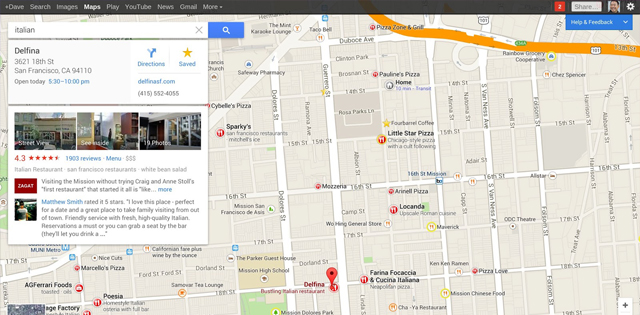
Google Wallet and Gmail Integration
Google Wallet has now been tightly integrated with Gmail to allow you to send money as an email attachment, making sending cash from your Wallet easier than ever. On top of this, Google have released an API that allows developers to streamline the process of paying with your Google Wallet from within apps or online. Whilst Google is keen to stress that they are not abandoning the NFC element of Google Wallet, these new additions could really give the service the boost it needs to take off properly!
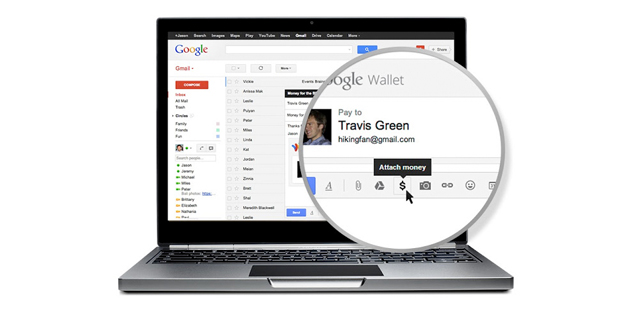
Google Play Gets Games Services
Google Play will provide games developers with the ability to introduce social features such as effortless multiplayer modes, high scores and achievements into their games – a feature that iOS users have been enjoying for a while now. These social features will all be tightly integrated with Google+, so in order to compete with your friends you must be in each other’s Circles. Google says they will also introduce the ability to play a game on one device, then pick up exactly where you left off on another – perfect for swapping between phone and tablet!
Huge updates to Google+
Google’s very own social network – or “social layer” as they prefer to call it – has been treated to no less than 41 updates, not least of all including a swanky new image-led, Pinterest-inspired interface. Tighter integration with other Google services through Google+ Hangouts mean that now all of the Google messaging services can be accessed from one location, offering a seamless transition between your favourite Google communication tools.
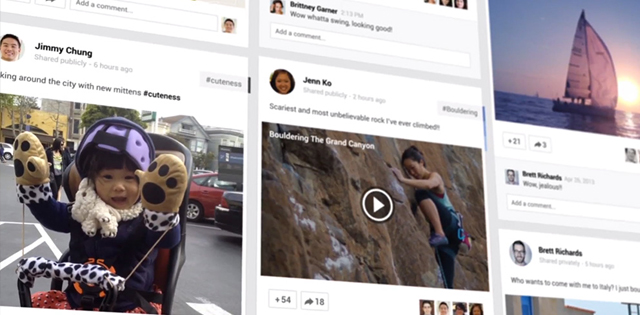
Samsung Galaxy S4 with Stock Android Coming in June
Perhaps the biggest surprise of all from this year’s conference, Google will be shipping a version of the Samsung Galaxy S4 without Samsung’s TouchWiz UI and included apps. Sporting a simpler Android install, this should put the handset in line for early OS updates direct from Google, whilst trimming away the “bloat” in the form of Samsung’s pre-installed software. Unfortunately this variant of the S4 is only scheduled for release in the US at present – hopefully we will see a release on this side of the pond soon!
So that concludes our roundup of the key announcements of this year’s I/O. There’s been a whole host of announcements across the full spectrum of Google’s apps and services, and it looks like it’s going to be another strong year for the Big G. For more information, check out the post on Google’s own blog.
The Penguin Returns: More Google Penguin Updates for 2013
Little more than a year ago, Google introduced what was then one of the biggest updates to its search algorithm. Originally dubbed the “Webspam Update”, it rocked the SERPs, knocking a considerable amount of websites reeling, causing their rankings to drop faster than you can say “p-p-pick up a Penguin”. This was obviously serious news for us here at eSterling, as we pride ourselves in our ability to consistently achieve and maintain good results in Google for our clients using strictly white-hat techniques. However, despite our dedication to good practice in our optimisation work, we still saw the websites of a few clients suffer.
Fast forward 12 months to where we are now, and the Big G is at it again. Matt Cutts (Google’s guru on all things search) announced last Friday that “Penguin 2.0” is on the way. We know a few things about this update – the most important being that it’s coming soon, and it’s going to be big. Big enough to disrupt the SERPs again, probably on a much larger scale than last time. Whilst the guys over at Google like to portray the penguin updates as cute, wide-eyed little penguin characters, here at eSterling we like to think of them as being more similar to Danny Devito as “the Penguin” from Batman Returns:

The Penguin Returns!
But never fear! As always, our SEO team of caped crusaders are here to bring justice to the search engine results pages with our words of wisdom and cutting edge strategies. Here’s our rundown of the information we have gathered so far concerning the new update:
1. It’s Just Around The Corner
In typical Google fashion, we don’t have a date for the implementation of the new update, but head of all things search at Google HQ, Matt Cutts, has helpfully informed us that it will be “sometime in the next few weeks.” Thanks Matt!
2. Advertorials
“Advertorial” creation (or native advertising) is an advertising method which disguises paid adverts and links as part of a site’s content, and passes link juice (and PageRank) on to the site being advertised. Google is clamping down on this, as it is a violation of their “quality guidelines” – attempting to hide the adverts and also passing on link juice to the advertised site. As we already know, Google doesn’t take kindly to paid links of any kind, but Matt Cutts is keen to mention that there is no harm in advertorials or native advertising, provided that the advertorial carries a clear disclaimer and there is no link juice being passed on (i.e. the link has a “nofollow” attribute).
3. Spammy Search Queries
For as long as people have been using SEO techniques to maximise their rankings, there have been certain niches which have been plagued by webspam from SEO practitioners using unscrupulous tactics such as keyword stuffing, doorway sites and hidden links. Some of these niches include “payday loans” and various adult-orientated areas, such as pornography and adult dating sites. Whilst this doesn’t apply to any of our clients, it’s nice to see that the Big G is starting to clamp down on these webspammers, as the advancements that are made in this area are sure to trickle down into the more above-board SERPs, helping to combat webspam across the whole internet.
4. Link Spam
Furthering their efforts to clamp down on webspammers, the new update will see Google once again penalising sites who have built unnatural links portfolios that comprise of paid links, links from sites with the sole intent of manipulating rankings (such as doorway sites) and any other dodgy link building or traffic boosting tactics. Think of this as the real “2.0” part of Penguin – this is basically what the last Penguin update did, but on a larger scale.
5. Rolling Out A System For More Advanced Link Analysis
Penguin 2.0 will introduce a more comprehensive link analysis procedure. Matt mentions this is still in early days, but this could potentially turn the SEO industry on its head if Google makes large changes to their link analysis algorithm.
6. Looking To Improve Communication With Webmasters
This is an almost out of character (albeit very welcome) move from Google: we are told that they will be increasing their efforts to provide useful support and information to webmasters, especially concerning hacked sites. If all goes according to plan, Google will be providing us with a “one-stop shop” to diagnosing hacked sites, providing useful information to webmasters straight from Webmaster Tools.
7. Looking To Reward Authority Sites In Niche Directories
Authority sites (sites which are deemed to be the best source of information in their specific niche) have become an important part of Google’s search algorithm. The new update will introduce new systems to identify these authority sites in a more appropriate way, and make it slightly easier to become an authoritative site if your site is exhibiting the requisite characteristics by “blurring the edges” of what makes a site authoritative.
8. Looking To Minimise “Domain Clusters” In SERPs
“Domain clusters” are a phenomenon of search in which a group of results from the same domain will be “clumped” together on the search results pages. This obviously occupies a considerable chunk of SERP real estate, pushing other domains further down the page. As the domains that tend to create this kind of “cluster” tend to be the big boys of the internet (Amazon, eBay etc), Google’s action to minimize these groups of results is good news for small to medium businesses, as it gives them more of a chance of squeezing into the first few results pages.
Obviously, as we exclusively employ white hat tactics here at eSterling, the majority of our client’s sites should see no negative repercussions from these updates – in fact, you may notice a positive outcome as competitors who have used less legitimate SEO agencies get stung by the update and their rankings drop. However, the inevitable truth is that some sites will be undeservedly penalised, as has happened with previous algorithm updates, but rest assured we will be keeping a close watch on all client’s rankings over the coming months and striving to continue to provide all of our clients with our usual first-rate SEO services.
Click here to see Matt Cutts himself discussing the new Penguin update.
Well, that was a pretty gloomy blog post! In the interest of brightening things up a bit, here’s a little something you can try in Google image search:
1. Go to Google image search
2. Type in “Atari Breakout”
3. Hit search
4. Play the Atari classic “Breakout” with your image search results!
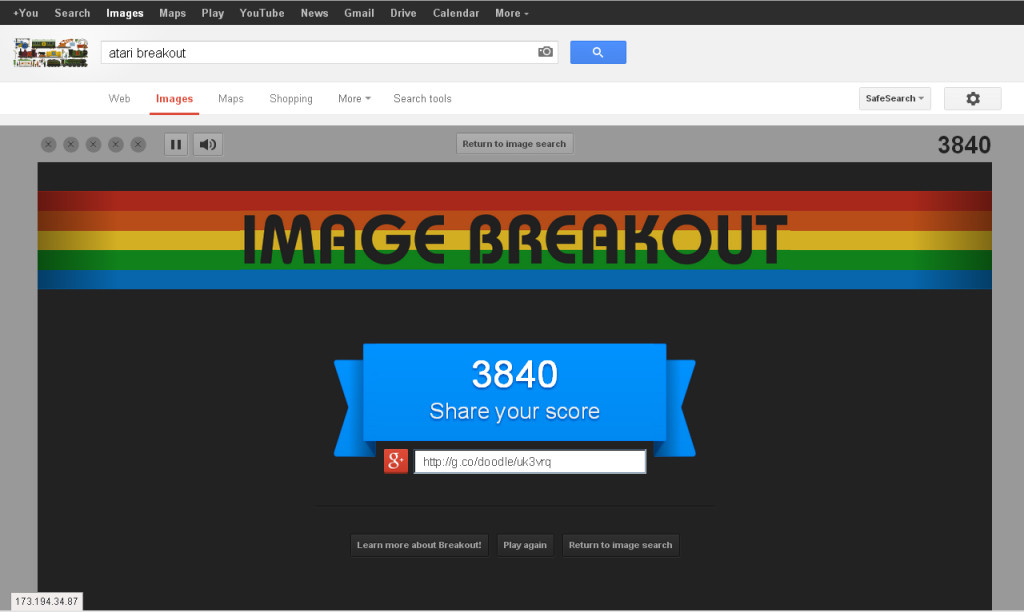
Our Breakout High Score!
See if you can beat our office high score!
New Dynamic Infographic from Google – How Search Works
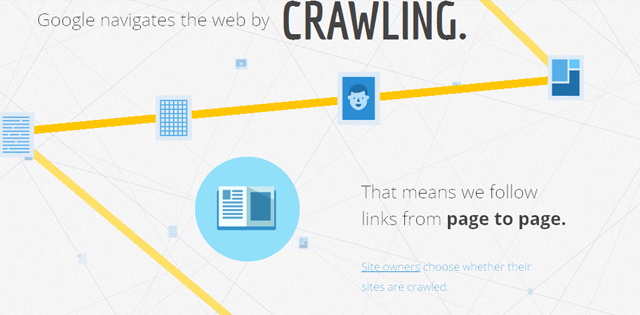
If you’ve ever been curious exactly how Google works, you might have found it a bit difficult to get your head around – which is completely understandable, as it’s not exactly simple being the most powerful search engine in the world!
However, the generous guys at the Big G have taken time out of their hectic schedule to let us know exactly how they do it – in simple terms, of course.
Image copyright – who’s right and whose rights are they anyway?
Image copyright is in the news again – but who has the rights to what we publish through social media?
In the aftermath of the horrendous helicopter crash in central London yesterday, images and videos were shared on social media sites, including Twitter. These photos were then picked up by major media outlets including The Daily Mail, The Sun, The London Evening Standard, The Guardian and Sky News among others, and used in breaking news stories covering the crash. Although there has been a historical acceptance in using so-called ‘user-generated’ content, rules about copyright of images posted on Twitter has changed the stakes.
According to Twitter rules, sharing images on the social media site does not constitute a free-for-all and the owner of the photo still retains the rights to it. News outlets are required to credit the owner and should not use their images without permission and most ethical agencies appear to have a policy which supports this.
So how does this affect you, a web site owner? How can you protect your images online and where should you source your images from in order to protect yourself from potential litigation?
Using your own images
Many companies choose to take their own product or general images for the company web site, either taking a hands-on approach or hiring a photographer to take and edit any images ready for use. This allows you to get exactly the type of image you require and negates the need for lengthy trawling of image banks or seeking permission from other image owners. It is important that if you do use a photographer (whether professional or casual) you discuss issues such as ownership and copyright from the outset. In some cases, you may be happy to share your images but once you do, there is the chance that they could be sold on, leaving you out of the loop. It pays to have a conversation about this and make some sort of formal agreement.
Using other people’s images
In a lot of cases, smaller companies may not have the time, funds or resource to take their own photos and may only need a handful of strong images to populate the web site. It is in these circumstances that you will need to look for images that belong to someone else. Good old Google images makes it possible for us to search for and find a ton of photos which may adequately fit our purpose but DO NOT, I repeat DO NOT be tempted to pinch these and use them on your web site believing ‘nobody will know’. Copyright infringement is big business and it isn’t something you want to get into. Instead choose a reputable design agency who will advise you about which images to choose and will source them ethically for you. Stock images can be bought relatively cheaply (starting at a couple of pounds) and the small investment you will make is pennies in the long run.
The internet encourages sharing, social media is ALL about sharing, but just be careful. Sharing doesn’t mean transferring ownership, so look but don’t touch.
New Year’s Re-SEO-lutions
Expanding your SEO strategy for 2013 and beyond.
2012 was a turbulent year for SEO and eMarketing professionals – amongst a slew of algorithm updates and tweaks from Google, we have seen several other game-changing factors that have really tested the adaptability of our dedicated SEO team here at eSterling.
Google have been working hard to negate any unscrupulous SEO activity, as well as reducing the effectiveness of scalable link building strategies such as mass directory submission or article spinning, giving many grey-hat SEO practitioners a major headache.
Google’s Penguin update, which was released in April 2012, focused on eliminating websites using webspam tactics such as spamdexing (squeezing a keyword into a site as many times as possible, often using nefarious tactics such as black-on-black text) and linkbombing (posting a link to the site using a keyword as anchor text in as many locations across the internet as possible) to artificially boost their search rankings, at the expense of website usability. The update penalised these sites by placing them lower in search engine results pages than they featured originally – or, in extreme cases, removing them from Google’s indexing entirely.
Exact match domains (URLs which directly match one of the site’s keywords, for example www.teethwhitening.com) have also felt the pressure, as Google introduced the imaginatively titled Low Quality Exact Match Domain Update. This update, whilst not sounding as cute or cuddly as either of the major updates Panda and Penguin, was no less important. It was an attempt to rid the SERPs of sites which are of low quality, but have used their exact match domain name to push their way to the top of the results pages.
Moving Forward
So, if this is what Google has done in the last year to make our lives more difficult, where do we go next?
The good news for us is that this means it is now harder than ever to increase a website’s search visibility with these dubious tactics, leaving much more room for honest, user-friendly SEO strategies, and has shifted the emphasis from building as many links as possible to your site to being much more about the end user – the importance now lies with ease of navigation, increasing usability and offering informative, relevant and up-to-date content.
Google’s actions over the last 12 months could easily be misconstrued as disdain for the SEO profession – this is not the case. Rather, The Big G is trying to encourage webmasters and SEO professionals to remember that the content of their site, not where it appears in search engine results pages, are what is most important to the user – and, by extension of this, to the website owner.
This is not to say that search engine optimisation as a profession is on the way out – far from it, in fact. 6 out of 10 organizations expect to increase SEO headcount in the coming year. The industry is also becoming more widely understood – the same report details that 63% of executive teams are more familiar with SEO metrics than 12 months ago.
The shift has been moved away from SEO as an independent discipline, and it is now becoming a more integral part of constructing an internet presence. For an SEO campaign to be truly effective it must be integrated with other aspects of the business – marketing, sales, design, and social media – must all become one holistic package in order to establish a brand online, as opposed to trying to “pull a fast one” on Google.
To quote Trond Lynbø on Edgyseo.com:
“Many site owners want to do the minimum possible, yet expect awesome results. But the days of ‘quick fix SEO’ are numbered, if not already over. It’s time to see SEO from a different angle, with broader, wider focus. To step back, rather than blindly rush to implement new tactics. To decide where you want to go, and act on a strategy-driven plan.”
Having a strategy for your SEO is becoming more and more important, as simply building up link equity is no longer enough to get by. Social media is becoming increasingly important to every business – more than 1 million websites have now introduced Facebook integration in various manners, and social media now accounts for 18% of all time spent online.
If 2012 has taught us one thing about what lies in store for 2013, it’s that we as SEO professionals need to stay on our toes – major algorithm updates are pretty much inevitable, and they could pop up at any time with little or no warning – but rest assured, the team here at eSterling are ready to rise to this challenge and continue to provide you with a solid internet marketing strategy to see you through the year and beyond.
For more information on our eMarketing and SEO services, click here.
Cookie Law FAQ
What are cookies?
Cookies are also known as browser cookies or tracking cookies and are small, often encrypted, text files located in browser directories. They are used to help users navigate a website efficiently and perform certain functions.
Some of the most common functions using cookies are:
- Logging into a website
- Buying goods online
- Personalised adverts
- Tracking data using Google Analytics
Why has the law been changed?
The law has been designed to protect the privacy of internet users – even when the information being collected about them is not directly personally identifiable. The changes are a response to increasing concern about online tracking and the use of spyware.
An example of this type of tracking is personalised advertising – where a retailer can use data about what you have looked at online to advertise related products to you when you are visiting a different website.
How does the law affect my website?
The new rules are not designed to restrict cookies as such, they are intended to prevent cookies being used to store information on people’s computers and recognising them via the device they are using, without their knowledge and agreement.
Using cookies is therefore not prohibited by the new regulations, but they do require that people are told about cookies and given the choice as to which of their online activities are monitored.
All websites are now required to offer users the chance to opt out of cookies. This is what the legislation states:
“a person shall not store or gain access to information stored, in the terminal equipment of a subscriber or user unless the requirements of paragraph (2) are met.
(2) The requirements are that the subscriber or user of that terminal equipment-
(a) is provided with clear and comprehensive information about the purposes of the storage of, or access to, that information; and
(b) has given his or her consent.
Regulation 6 of the Privacy and Electronic Communications Regulations 2003 (PECR)”
The use of cookies and similar technologies has been commonplace for some time, and cookies in particular are important in the provision of many online services. Therefore there is an exception to obtaining consent where the use of the cookie is:
(a) for the sole purpose of carrying out the transmission of a communication over an electronic communications network; or
(b) where such storage or access is strictly necessary for the provision of an information society service requested by the subscriber or user.
This means that e-commerce websites will be able to carry on using cookies for transactions without consent. Other cookies that are likely to be exempt from the legislation include security cookies (e.g online banking) and cookies that speed up loading of data.
Shortly after the new legislation was announced, the regulations were amended to allow ‘implied consent’ for other cookies, such as first and third party advertising cookies, cookies used to recognise a user when they return to a site (in order to display personalised information) and analytical data cookies, e.g Google Analytics.
What do I need to do next?
You will be required to display a message on your site asking users if they wish to opt-out of cookies. The message must:
tell people that the cookies are there,
explain what the cookies are doing, and
obtain their consent to store a cookie on their device
This can be in the form of a pop-up banner that appears as soon as a user clicks onto your homepage, or you can request ‘implied consent’ from users by updating your terms and conditions and/or privacy policy to include the information listed above.
What happens if a user opts out of cookies?
Due to their core role of enhancing or enabling usability or site processes, disabling cookies may prevent users from using certain parts of a website. This is why e-commerce sites and websites requiring a log-in are exempt from the regulations.
It is crucial that any opt-out message you decide to display will make users aware that cookies could affect how they use your website in a negative way. You may also need to be prepared to deal with some additional customer enquiries from users that have opted out of cookies and are now finding it difficult to use your website. Please note that users can re-enable cookies by changing their browser settings.
It is possible that Google Analytics tracking data could be affected by users opting out of cookies, and visits may appear artificially low. We anticipate that Google will work to resolve this and the eMarketing team will inform users of any long term changes to Google Analytics policy.




